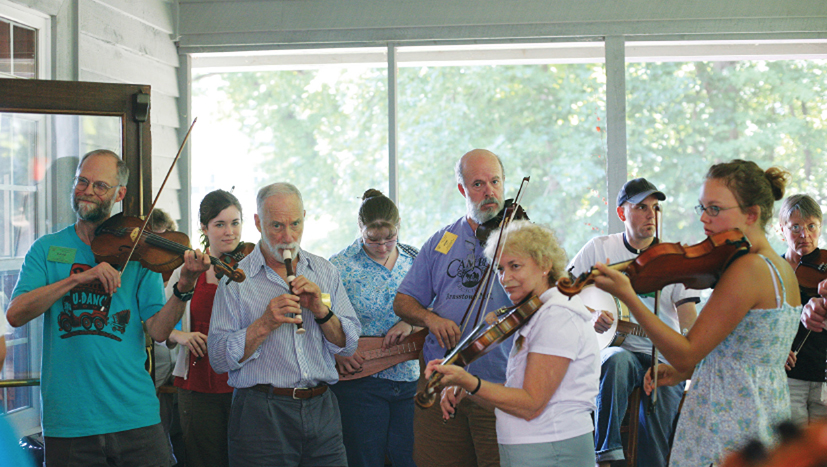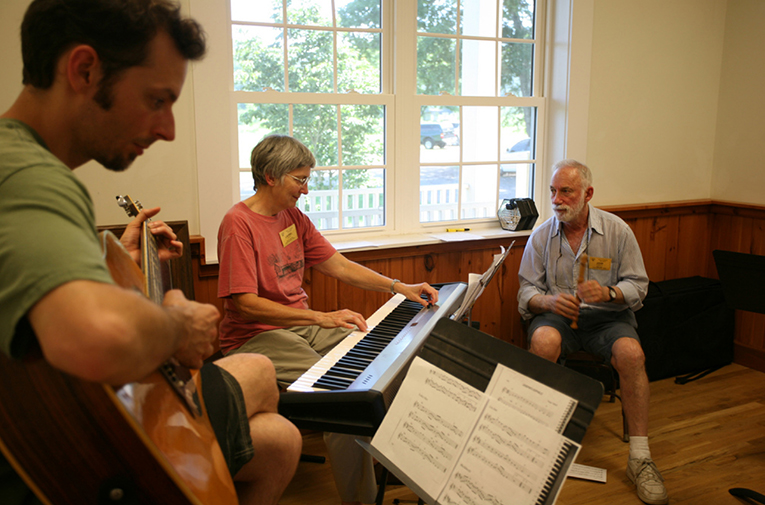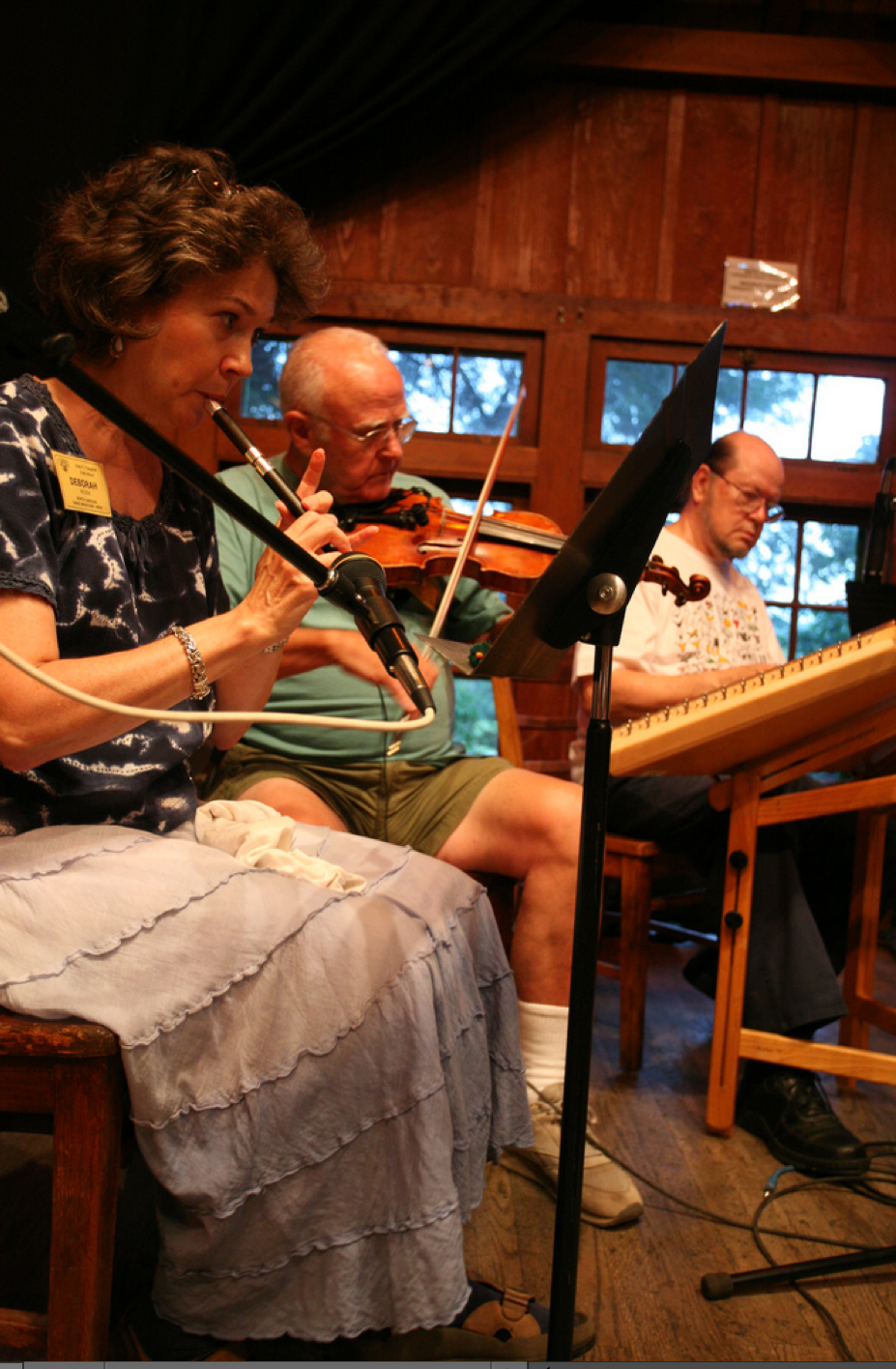[caption id="attachment_10345" align="aligncenter" width="480"]

Dance Musicians Week students serenade folks as they enter the Dining Hall for lunch.[/caption]
[caption id="attachment_10346" align="alignright" width="256"]

Student learn to play together as a dance band.[/caption]
In 2001, I received a message from Bob Dalsemer asking if I would join the instructor team for
Dance Musicians Week at the John C. Campbell Folk School. Lifelong mentor, fiddler, caller and instructor extraordinaire David Kaynor had thrown my name out to Bob, the music and dance coordinator at the school at the time. At that point I was living in Western Massachusetts playing with David and the Greenfield Dance Band and had been devoting much of my time to being a touring singer songwriter. I had been in the contra dance scene picking tunes for about a decade. My musical influences were a woven patchwork of the folks that had surrounded me growing up in New York—Jay Unger, Lyn Hardy, Molly Mason, Sonny Ochs, Pete Seeger. Being born into a family of activists and labor organizers, community was most important and music was (and is) the vehicle and the glue that tied it all together. We were raised to believe that music and dance for music and dance’s sake is not enough. Community first.
[caption id="attachment_10347" align="alignleft" width="195"]

A band of DMW students takes the stage for one of the nightly contra dances.[/caption]
“Sing behind the plow!” is one of the great mottos of the John C. Campbell Folk School. Upon first look into the Folk School it seemed to be a kind of Brigadoon, a place stuck in time. Of course, I mean that in the best way. At that point in my life I was lamenting the waning of “community” in “community dance” and was excited to see a place nestled in the far west mountains of North Carolina, founded in the 1920s by the grandmother of the twentieth-century folk music revival, Olive Dame Campbell. Mrs. Campbell based the philosophy of the Folk School on the Danish tradition of
folkenhojskolen which aims to foster culture and tradition through noncompetitive adult education—metalwork, quilting, woodwork, photography, cooking—happening alongside a rich tradition of music and dance, with folks from the surrounding Brasstown community invited to weekly concerts and dances and given special admittance into classes. I heard a student once comment “This place is like a kind of Whoville!” referencing the idealistic village from How the Grinch Stole Christmas. This is exemplified best by the very fact that each dance ends with a short goodnight song, sung with hands joined in a circle. The facilities are surrounded by hills, rivers, lush gardens, outdoor folky sculptures and paths through the woods. Best of all, the dancers are not contra “dancers”—they are mostly just folks from the community. Their gauge of a great experience is more based on who they got to see that night, not how slick the floor was or what tempo the band had played. I had found my place, or maybe the place found me!